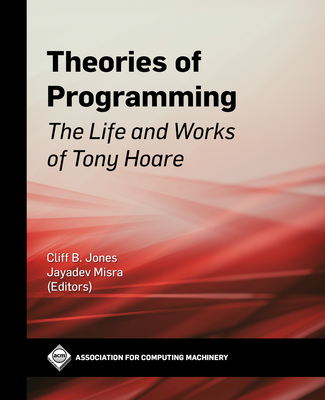Algebraic Approaches to Program Semantics (Monographs in Computer Science)
暫譯: 程式語義的代數方法(計算機科學專論)
Ernest G. Manes, Michael A. Arbib
- 出版商: Springer
- 出版日期: 2014-01-17
- 售價: $4,130
- 貴賓價: 9.5 折 $3,924
- 語言: 英文
- 頁數: 353
- 裝訂: Paperback
- ISBN: 1461293774
- ISBN-13: 9781461293774
-
相關分類:
Computer-Science
海外代購書籍(需單獨結帳)
相關主題
商品描述
In the 1930s, mathematical logicians studied the notion of "effective comput ability" using such notions as recursive functions, A-calculus, and Turing machines. The 1940s saw the construction of the first electronic computers, and the next 20 years saw the evolution of higher-level programming languages in which programs could be written in a convenient fashion independent (thanks to compilers and interpreters) of the architecture of any specific machine. The development of such languages led in turn to the general analysis of questions of syntax, structuring strings of symbols which could count as legal programs, and semantics, determining the "meaning" of a program, for example, as the function it computes in transforming input data to output results. An important approach to semantics, pioneered by Floyd, Hoare, and Wirth, is called assertion semantics: given a specification of which assertions (preconditions) on input data should guarantee that the results satisfy desired assertions (postconditions) on output data, one seeks a logical proof that the program satisfies its specification. An alternative approach, pioneered by Scott and Strachey, is called denotational semantics: it offers algebraic techniques for characterizing the denotation of (i. e. , the function computed by) a program-the properties of the program can then be checked by direct comparison of the denotation with the specification. This book is an introduction to denotational semantics. More specifically, we introduce the reader to two approaches to denotational semantics: the order semantics of Scott and Strachey and our own partially additive semantics.
商品描述(中文翻譯)
在1930年代,數學邏輯學家研究了「有效可計算性」的概念,使用了遞歸函數、λ-演算和圖靈機等概念。1940年代,第一台電子計算機的建造問世,接下來的20年中,高階程式語言的演變使得程式可以以方便的方式撰寫,並且不再依賴於任何特定機器的架構(這要歸功於編譯器和解釋器)。這些語言的發展進而導致了對語法問題的普遍分析,結構化符號串以便能夠被視為合法的程式,以及語義學,確定程式的「意義」,例如,作為它在將輸入數據轉換為輸出結果時所計算的函數。由Floyd、Hoare和Wirth所開創的一種重要語義學方法稱為斷言語義學:給定一個規範,說明哪些對輸入數據的斷言(前置條件)應該保證結果滿足對輸出數據的期望斷言(後置條件),人們尋求一個邏輯證明,證明該程式滿足其規範。另一種由Scott和Strachey所開創的方法稱為指稱語義學:它提供了代數技術來表徵程式的指稱(即,程式計算的函數)——然後可以通過將指稱與規範進行直接比較來檢查程式的性質。本書是指稱語義學的入門介紹。更具體地說,我們將讀者介紹兩種指稱語義學的方法:Scott和Strachey的順序語義學以及我們自己的部分加法語義學。































